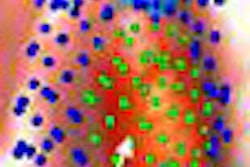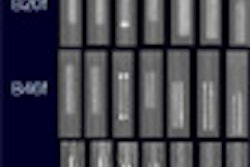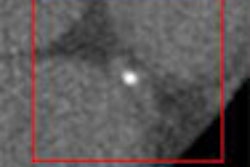VIENNA - Cathartic bowel prep and colonoscopic examination -- a mildly uncomfortable venture for your average 50-year-old -- can be traumatic and even dangerous in the frail and elderly.
Yet there are many scenarios in which a symptomatic 90-year-old might need colorectal screening. A 1-cm polyp wouldn't be worth worrying about. But a large obstructing colonic mass would.
Researchers in Ireland have found a solution in prepless virtual colonoscopy, with a protocol that sidesteps both the rigorous bowel preparation and the colonoscope.
Today at the European Congress of Radiology (ECR), Dr. Aoife Keeling from Beaumont Hospital in Dublin presented results from her and colleague Dr. Martina Morrin's study of 68 patients (37% men, average age 84 years) with clinical indications of anemia, rectal bleeding, weight loss, or a change in bowel habits, who were prospectively recruited for virtual colonoscopy (VC or CT colonography [CTC]). More than a third had previously failed colonoscopy.
"Full (bowel) preparation can be severe and often poorly tolerated in frail and elderly patients," Keeling said. "The purpose of our study is to prospectively assess the utility of preparation-free CT colonography in frail, elderly patients at high risk for colorectal carcinoma." The ongoing prospective study is still recruiting frail, elderly patients at high risk of colorectal cancer.
The patients consumed a low-residue diet for three days before the CT scan, then 20 mL oral diatrizoate meglumine (Gastrografin, Bayer Schering Pharma, Berlin) in a liter of water or juice more than 24 hours before the scan. This was followed by an additional 20 mL of oral Gastrografin in a liter of clear fluid two hours prior to scanning. No oral laxatives were used.
Before scanning, all subjects were placed in the right decubitus position, and the colon was gently insufflated with room air to patient tolerance, Keeling said.
Following scout view acquisition, an initial supine scan is performed on a 16-slice CT scanner (Sensation 16, Siemens Medical Solutions, Erlangen, Germany), using 16 x 1-mm collimation and a low-dose technique (60 mAs, 120 kVp).
"Additional views in the oblique or prone planes are only obtained if there is inadequate colonic distension on the initial supine view," she said.
In all, 29% of patients required additional scanning positions, and IV contrast was administered in 28%. Images were rated for a number of quality measures including stool burden, adequacy of fluid and fecal tagging, tagging-related artifacts, and overall reader confidence.
To date, the group has found colonic pathology in 12 patients (18%), including seven mass lesions (n = 3 with liver metastases), and three colonic strictures, Keeling said. Confirmed primary cancers include one renal cell carcinoma, one bladder cancer, and an esophageal lesion. Extracolonic findings included one dermoid cyst, one abdominal aortic aneurysm, six hiatal hernias, five inguinal hernias, and one lung nodule.
Image quality was rated good (grade 4) or excellent (grade 5) in every patient, and confidence for evaluating the colon was good or excellent in all cases; there were no incomplete studies. Tagging and colonic distension were considered adequate in all cases, though residual fecal material was seen in 89% of colonic segments. Mean colonic distension was over 4 (very good) in all segments except for slightly lower assessments in the descending colon (mean 3.9) and descending colon (mean 3.8), Keeling said.
Prepless virtual colonoscopy with oral contrast has been shown to be feasible in frail, elderly patients, and is a viable alternative to aggressive oral cleansing preparation and colonoscopy for colonic tumor detection, Keeling concluded. Because only supine scans are needed in two-thirds of the cases, it is not difficult to work the protocol into the radiologists' daily workflow, she added.
In response to questions from the audience, Keeling said that although the iodinated fecal tagging preparation is itself a mild laxative, only two to three patients have reported severe diarrhea over the course of the study. The patient consumes the tagging mixture slowly over several hours, she added, so the effects do not appear to have hampered compliance or willingness to undergo the exam. Unfortunately, direct confirmation of the findings has been reserved for the most serious cases.
"This population was frail and elderly ... and only five patients were deemed fit enough to have a full colonoscopy," Keeling said. "Two who had masses that we suspect are cancers are considered too frail for general anesthesia and surgical resection. The aim of this method is to diagnose large lesions that could potentially become obstructing and interfere with the patient's quality of life."
By Eric Barnes
AuntMinnie.com staff writer
March 13, 2007
Related Reading
VC CAD ramps up detection of medium-sized polyps, March 12, 2007
MR colonography disappoints in reduced-prep protocol, March 6, 2007
Tagged VC succeeds where colonoscopy fails in elderly, March 28, 2006
Iodine tagging regimen yields best VC results, January 27, 2005
Screening colonoscopy worthwhile into the eighth and ninth decades, September 1, 2003
Copyright © 2007 AuntMinnie.com



















